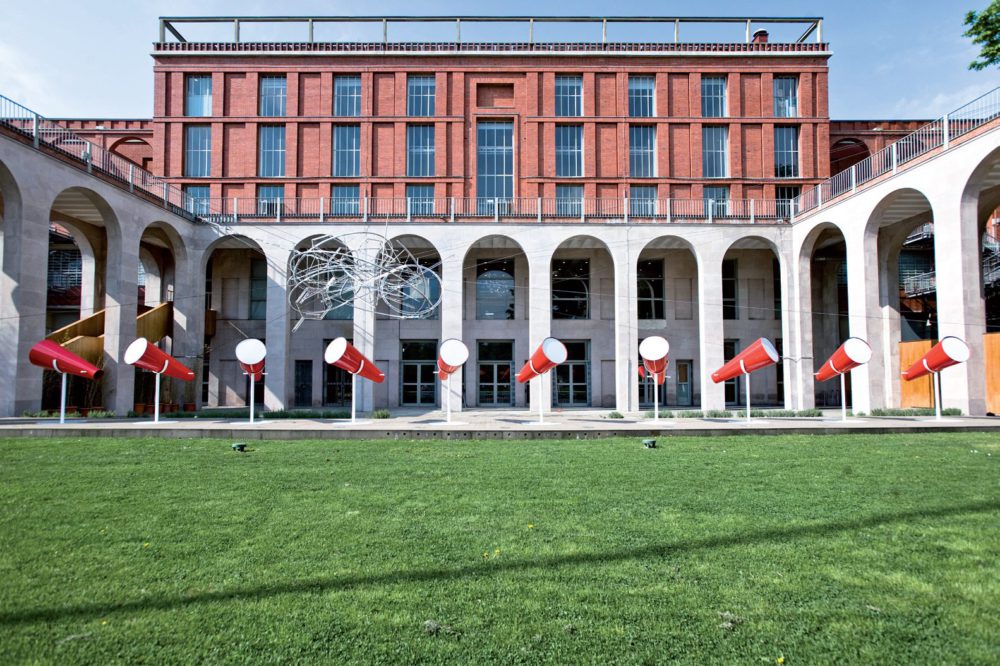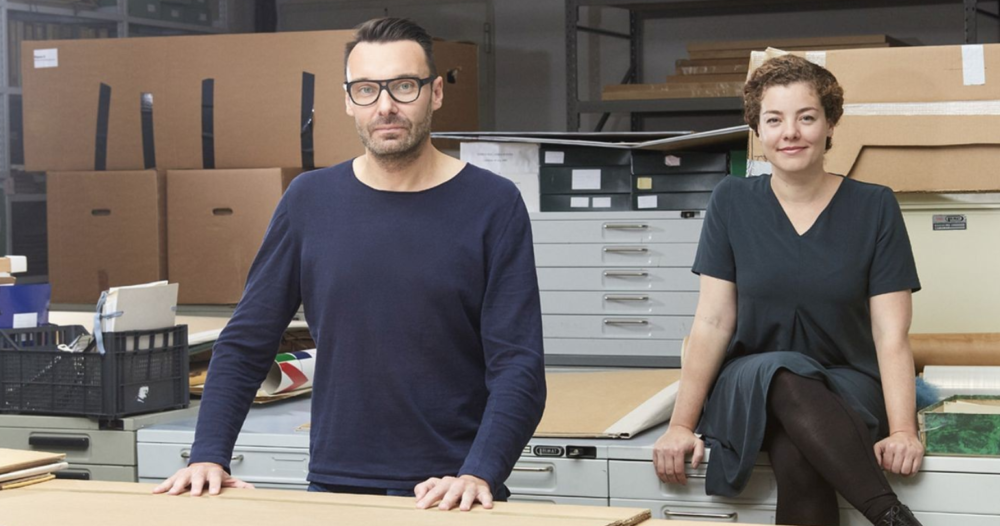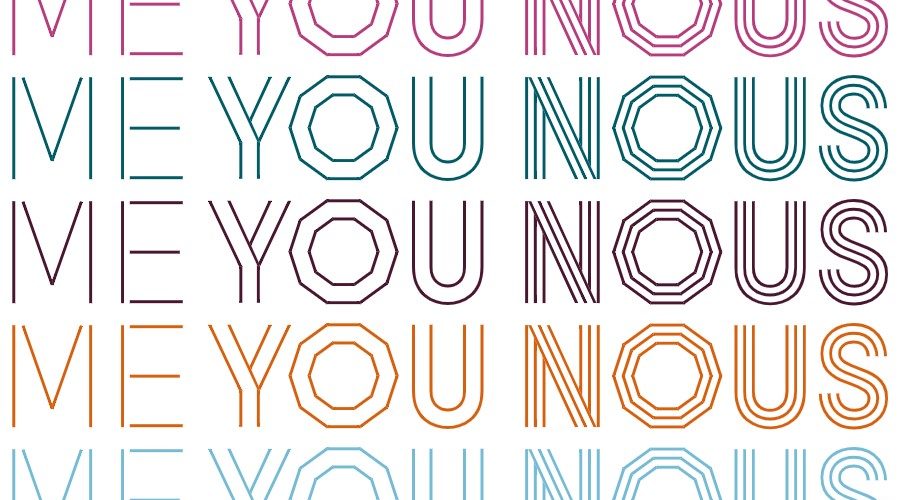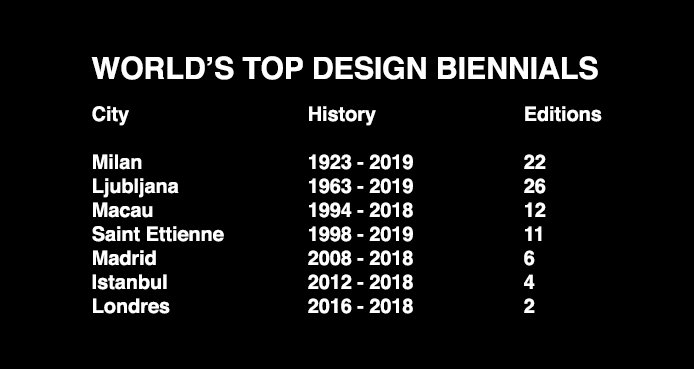Biennial fever
ho
We review the main design biennials and the value they bring to the panorama of existing art and architecture biennials.

The world of design seems to follow the wake of art and architecture, and design biennials begin to proliferate around the world. Most of these events, getting away from their usual circuit of fairs and trade shows, offer a broader reading of the discipline as a critical tool not only for the sector but for the whole of society. We take a look at the main events and the value they bring to the panorama of existing art and architecture biennials.
Triennale di Milano: the classic
Next edition (22nd): 1 of March of 2019
Web
The Triennale of Milan was the first international exhibition specialized in decorative arts in the world. Taking the art biennial of Venice as an archetype, the event was born as a biennial in 1923 in the Villa Reale at Monza park, on the outskirts of Milan, with the aim of stimulating the relationship between industry, art and society. From the beginning, the event revolves around a unifying idea of all forms of art and creative expression. In 1933 the biennial moved to Milan and became triennial. The architect Giovanni Muzio designed the Palazzo dell’Arte to host large exhibitions and museum activities. Despite its interruption for 20 years, from 1996 to 2016, for more than 80 years the event has been an icon for the cultural and economic life of the country and the engine of an important international dialogue between society, the arts and the industry.
The next edition of the biennial, the 22nd, will open on March 1st under the title of “Broken Nature” and has been curated by Paola Antonelli, chief curator of design and architecture at MoMA in New York. The event will revolve around the concept of restorative design and show pieces not only of designers but also of artists, architects and scientists whose projects pose global design problems. This approach demonstrates how design permeates other disciplines and is intimately linked to our way of life.

Ljubljana Design Biennial o BIO: the experimental
Next edition (26th): 14 November 2019
Web
The Ljubljana Design Biennial (BIO) was founded in 1963 by the MAO (National Museum of Architecture and Design of Slovenia) and over time has become the most important event of this type in Europe together with the Milan Triennial. From its 23rd edition in 2012, the biennial went from exhibiting industrial design from around the world through a call and prizes, to offering a curated model around a theme with pieces and participants selected by a committee.
BIO prepares its 26th edition for the end of 2019, and it defines itself as an international platform for new design approaches, the development of alternatives to established models through collaborative and multidisciplinary design processes. The curator appointed to lead this edition, Thomas Geisler, proposes to explore the field of information – one of the greatest challenges of our time – taking into account the role of design in its creation, management and dissemination.

Macao Design Biennal: the awards in focus
Last edition (11th): 17th November 2017 – 31st March 2018
Web
Founded by the Macao design association, the Macao design biennial has been held ten times since 1994. Organized around its awards, the event seeks to promote the design culture in Macao and the rest of Asia through various activities, exhibitions and seminars. These efforts help local designers gain international recognition and allow the public to realize the relevance of design in their day-to-day and their role in forging sustainable economic development.
This draws attention to the fact that, against the tendency of contemporary biennials to structure themselves around specific themes, Macao’s design biennial continues to take its awards as its axis and core.
St. Etienne’s International Biennial: design as a weapon
Next edition (11th): 21st March – 22nd April 2019
Web
During the French Revolution, St Etienne was popularly known as Armeville (the city of arms) for its powerful arms industry. Today, however, the historic headquarters of its arms factory is the headquarters of the “Cité du Design” (City of Design), the organization that since 1998 organizes the International Biennial of Design of St. Etienne and has turned design into the best weapon in the city, recognized as a capital of design by the UNESCO in 2010.
The next edition of the event, organized by the Cité du Design and the School of Art and Design of St. Etienne, is entitled: ME / YOU / NOUS. Under the slogan “Designing a common ground” the biennial aims to address design through the connections it creates between society and the planet, an approach that is very much in line with Milan’s appointment, but more optimistic.

Bienal Iberoamericana de diseño: the reference for iberoamerican design
Last edition (6th): 20th November 2018 – 20th January 2019
Web
The BID is the most important Ibero-American design event and, for the last 10 years, has shown the best projects from all areas of design from Latin America, Spain and Portugal selected through an open call. The biennial focuses on the dissemination of Ibero-American design through a large exhibition that, after its inauguration in Matadero Madrid, travels through other cities in Latin America and Europe.
Istanbul Design Biennial: design under scrutiny
Last edition (4th): 22nd September – 4th November 2018
Web
The relatively young Istanbul Design Biennial begins to position itself after its 4th edition “A School of Schools” as an unavoidable appointment around the reflection on design as a system, beyond the object. The event uses the city as a dynamic space for projects, actions and interventions that pose global design problems, taking the same notion of design to scrutiny, stimulating a critical debate and giving relevance to little-explored topics.

London Design Biennale: The newcomer
Last edition (2nd): 4-23rd September 2018
Web
Europe’s youngest biennial up to date advances at a firm pace combining the classic model of national participations with the critical aim of curated biennials such as Milan, Istanbul or Ljubljana. Its second edition, under the title “Emotional States”, showed highly ambitious and innovative projects developed by teams from around the world that reflected on the ability of design to provoke all kinds of emotions.

Art and architecture biennials, despite their willingness to open a public reflection around highly professionalized disciplines, continue to attract mostly a public specialized in art and architecture. The design sector, however, enjoys a closer relationship with society and it is also more cross-disciplinary, something that makes design biennials attractive for a wider, more multidisciplinary and not necessarily professional audience.
Topics such as Milan’s “Broken Nature”, St. Etienne’s “Looking for a common ground”, Istanbul’s “A school of schools” or London’s “emotional states” show the relevance of design in the world’s most urgent social challenges, and although the main art and architecture biennials are also designed following this integrative model, design seems to attract more and more attention, probably due to its ability to dialogue with society in a more direct and humble way.
Author: Sol Polo